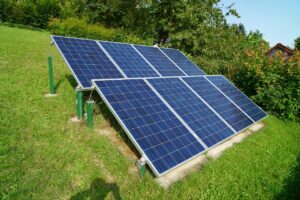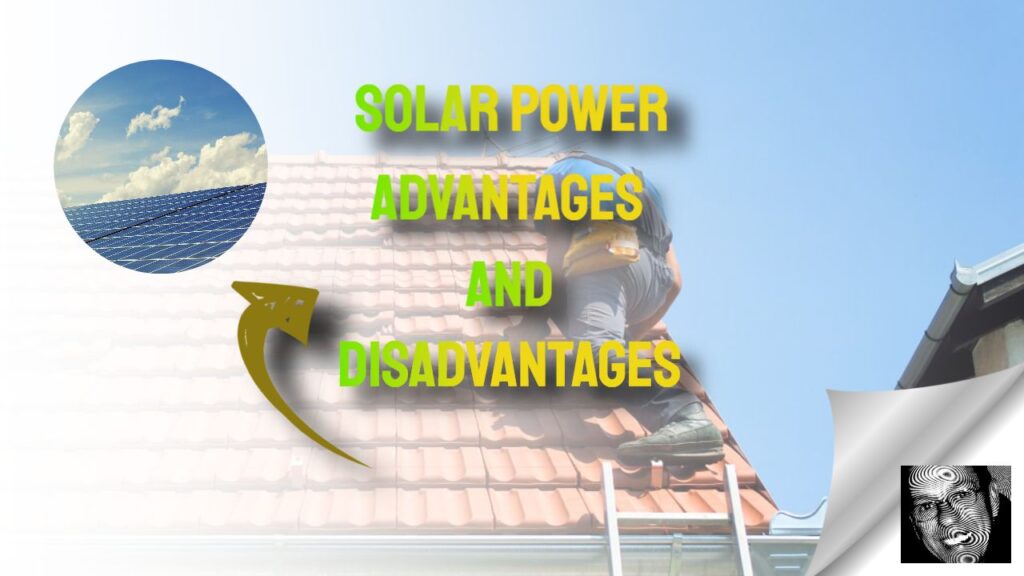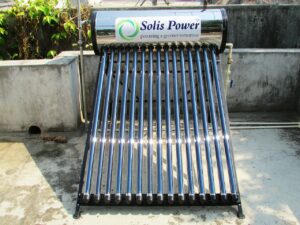Discover Essential Insights into Solar Energy Topics
- Uncover the 12 Key Benefits and Drawbacks of Solar Energy
- Gain a Deep Understanding of Solar Energy: An In-Depth Overview
- Simplify Your Setup: Choosing Solar Lights for Home and Outdoor Spaces
- Explore the Major Benefits of Harnessing Solar Energy
- Embrace Solar Energy: Your Comprehensive Solution for Eco-Friendly Home Power
- Ultimate Guide to Home Solar Batteries: Optimizing Your Energy Storage Solutions
- Innovative Techniques for Storing Solar Energy in Your Home
- Complete Guide to Heating Your Pool with Solar Panels
- A Critical Analysis of Nuclear Energy's Pros and Cons
- In-Depth Look at the Key Benefits of Nuclear Energy
- Explore How Solar Panels Generate Electricity: The Mechanism Explained
- Investigate the Effects of Reduced Sunlight on Solar Power Efficiency
- Assessing the Pros and Cons of Wind Energy for Sustainable Solutions
- Understanding the Key Benefits of Wind Energy for Sustainable Power
- Analyzing the Advantages and Disadvantages of Hydropower for Energy Solutions
Uncover the 12 Key Benefits and Drawbacks of Solar Energy
As you contemplate the installation of solar panels in your residence, it is vital to thoroughly understand the advantages and disadvantages associated with solar energy. This understanding significantly influences your decision-making process as an informed homeowner. We will explore the most critical factors impacting your choice, including the technological innovations behind the solar watt energy manager. This advanced control unit enhances your home’s energy management by meticulously monitoring both energy generation and energy consumption, thereby contributing to improved energy efficiency and cost savings.
The ongoing debate regarding nuclear energy highlights the intricate landscape of renewable energy sources. Both advocates and opponents of nuclear power present compelling arguments that underscore the various pros and cons associated with its use. By examining these perspectives, you can gain valuable insights that empower you to make well-informed decisions about your energy consumption practices and overall sustainability efforts.
While solar energy systems are generally designed for ease of use, some challenges may arise, particularly due to limited installation space and the necessity for specific configurations to optimize their efficiency. Homeowners need adequate access, such as a suitable roof or an expansive backyard, to effectively install solar arrays. Those residing in apartments or condominiums may find the feasibility of installing personal solar arrays considerably diminished and may need to collaborate with property management to explore community solar solutions that benefit multiple residents.
The environmental advantages of solar energy are profound and play a crucial role in the construction of green buildings, which rely on sustainable energy sources like solar, wind, and geothermal energy. This transition reduces our dependency on fossil fuels, leading to a significant reduction in our carbon footprint. However, the placement of solar installations is critical; nearby trees or structures can obstruct sunlight and affect energy efficiency. Homeowners must also evaluate their architectural designs, as certain styles may not adequately support solar panel installations, necessitating a thoughtful approach to maximize benefits.
Recent reports reveal that Vietnam is set to decrease its feed-in tariffs for rooftop solar installations by as much as 38% next month. This adjustment aims to alleviate the burden on the nation’s power grid. According to the Dai Doan Ket newspaper, Hoang Tien Dung, the head of the Ministry of Industry and Trade's Electricity and Renewable Energy Bureau, announced that the new tariffs will range between US$0.052 and US$0.058 per kilowatt-hour, depending on the size of the solar system installed.
If you notice considerable room for improvement in your energy bills, solar energy could be a practical solution worth considering. By tapping into the sun's abundant energy, you can power your home while potentially reducing or even eliminating your reliance on the traditional power grid. Moreover, solar energy systems are known for their low maintenance costs over their lifespan, making them an appealing choice for homeowners committed to sustainability.
Simplify Your Setup: Choosing Solar Lights for Home and Outdoor Spaces
Whether you are utilizing solar energy in a motorhome, at a campsite, or in your home, most solar-powered devices are engineered for portability and ease of use. You can select individual solar products, such as solar lanterns and decorative fairy lights, or enhance your setup with portable solar panels and batteries to create a versatile solar energy system tailored to your specific requirements.
One of the leading options in the solar generator market is the Suaoki model, celebrated for its affordability and user-friendly setup. This generator comes equipped with three distinct charging options, allowing you to recharge it outdoors using the Suaoki 60W solar panel or via any compatible solar panel, AC plug, or DC input in your vehicle. With a robust battery capacity of 444Wh and a lightweight design of just over 12 pounds, this compact generator becomes an indispensable companion for camping excursions, agricultural tasks, fishing trips, hunting adventures, or construction projects.
Now that you have a grasp of the fundamentals of solar energy, consider diving into engaging solar projects with your kids that are both educational and easy to execute at home. For instance, constructing a solar oven can turn a sunny day into an exciting opportunity to prepare delicious meals like pizza, hot dogs, or cheesy nachos. With the help of instructional videos, you can transform a simple lesson into a fun and interactive family project.
A recent solar lighting initiative showcased the flexibility of portable solar lights. A client sought lighting solutions for various applications, including parking lots and adjacent construction sites. Instead of investing in permanent fixtures that require trenching, they opted for portable solar lighting that can be easily relocated using forklifts. This innovative approach ensured that both the parking areas and construction sites remained adequately illuminated, demonstrating the practicality of moving away from conventional lighting methods.
Explore the Major Benefits of Harnessing Solar Energy
The realm of solar energy is rich with valuable insights, although misinformation can sometimes obscure the truth. In this section, we will thoroughly investigate the myriad advantages and disadvantages associated with the installation of solar panels and the broader solar energy industry. The benefits of solar energy span various dimensions, encompassing financial, social, and environmental gains. Some of these benefits are well-known, while others may not be immediately apparent; we will unpack each aspect in detail.
In summary, solar energy presents significant advantages when weighed against its drawbacks, solidifying its position as the most accessible form of renewable energy available globally. From residential properties to commercial enterprises, implementing solar energy systems can lead to reduced electricity bills and a diversification of energy sources, preparing you for potential emergencies. Additionally, as technological advancements continue to unfold, solar energy systems are becoming increasingly efficient and cost-effective, enabling broader adoption among homeowners and business owners alike.
Explore these informative videos featuring experts who discuss the pros and cons of hydropower, delving into the ongoing debate surrounding renewable energy sources. Environmental activists frequently raise concerns regarding dam construction, prompting discussions about the long-term viability of hydropower. Will we prioritize renewable energy sources like solar, or will we continue to rely on fossil fuels? Is hydropower a cost-effective solution, and what potential disadvantages could arise from its application?
To encapsulate, the Hi-mo3 half-cut bifacial PERC module series is pioneering advancements in monocrystalline PERC technology. This series is characterized by high power output, exceptional energy yield, and low capital expenditure (CapEx). The Hi-mo3 employs half-cut technology to reduce the operating current of the solar cells, effectively minimizing resistive losses and enhancing power output by an average of 5-10 watts. With its bifacial technology, the front panel power reaches 320W (60-cell), achieving a bifaciality ratio exceeding 75%.

Embrace Solar Energy: Your Comprehensive Solution for Eco-Friendly Home Power
Determining the ideal renewable energy source can be a complex decision. Solar energy, harnessed through photovoltaic cells, is rapidly gaining traction in both residential and commercial sectors. The installation of solar panels comes with a plethora of benefits, including reduced energy expenses and improved energy autonomy. As a reliable energy solution with no moving parts, solar panels present a stable option for accessing clean energy, significantly contributing to your sustainability objectives.
Ultimate Guide to Home Solar Batteries: Optimizing Your Energy Storage Solutions
Every homeowner deserves the opportunity to harness solar energy on their property. In many states, this right is safeguarded by solar access laws, which prevent local governments and homeowners' associations (HOAs) from obstructing solar energy installations. However, these laws are not uniformly enforced, and even in compliant states, some HOAs may still impose outdated regulations that impede homeowners from accessing solar technology. This comprehensive guide aims to assist you in navigating HOA objections regarding your solar installation, offering effective strategies to enhance your home's solar-friendliness.
While solar energy systems offer a range of advantages and disadvantages, if this article has piqued your interest, our 6-step guide could be instrumental in identifying the best solar panels suited to your home. This guide covers everything from assessing roof compatibility to selecting the right type of solar panels, understanding costs, exploring savings opportunities, and maintenance tips.
For those considering battery backup options, companies like SolarCity provide Tesla Powerwall batteries designed to deliver backup energy during outages and natural disasters. The Powerwall is compact, stackable, and includes a built-in inverter, allowing for seamless integration with SolarCity's solar power systems.
Historically, solar energy storage has posed challenges, as battery technology has often lagged behind production advancements. While we can generate substantial electricity efficiently, storing it for nighttime or cloudy days remains a hurdle. Many homeowners find it challenging to effectively manage energy storage while selling surplus energy back to utility companies.
Innovative Techniques for Storing Solar Energy in Your Home
Recognized as one of the most effective methods to produce renewable energy for residential buildings, solar energy systems are affordable, easy to install, and require minimal maintenance. However, it is crucial to acknowledge that this energy solution may not be suitable for every situation. Like any energy source, solar energy has its benefits and drawbacks. Before deciding to adopt solar energy for your home or business, it is wise to look beyond marketing claims and understand the fundamental facts.
The sun generates an extraordinary amount of energy, with its rays taking approximately 8 minutes to travel the millions of miles to reach Earth. Remarkably, each hour, enough solar energy strikes the Earth to power the entire planet for a year. This staggering potential raises important questions about how to effectively harness it for personal use. The answer lies in solar panels.
The 2018 Solar Power Portal Awards are currently accepting submissions, as highlighted by Clean Energy News. This prestigious event, which has become a hallmark in the UK renewables industry calendar, marks its sixth year with a rebranding effort. The Solar Power Portal and Energy Storage News will join forces to celebrate the flourishing battery storage market both domestically and globally.
By employing distributed energy generation, energy efficiency improves while waste diminishes, as the energy generators are located closer to the consumers. Utilizing renewable energy sources like solar and wind to produce electricity in homes and businesses enhances the practicality of this model. Smaller microgrid units are less susceptible to simultaneous failures compared to larger systems, making distributed generation systems more reliable. Additionally, the impact of failure is less severe for a small unit than for a large one.
Complete Guide to Heating Your Pool with Solar Panels
Solar energy applications extend beyond conventional solar panels; solar water heaters are widely utilized to heat and store water in cooler climates. These systems work by capturing sunlight's heat through solar thermal collectors. The efficiency of solar water heaters is highly contingent upon sunlight availability, enabling them to meet warm water demands effectively during sunny days.
Multiple solar panel systems can also be employed for water heating purposes. Thermal solar solutions represent environmentally friendly alternatives to gas boilers and traditional water heaters, providing a sustainable approach to heating water.
In the realm of solar science kits for children, exciting developments have emerged in the solar toy market. With scalable technology, miniature solar-powered products have gained popularity, offering enjoyable and educational experiences. These solar kits can ignite curiosity and foster understanding of solar energy concepts among children.
To introduce the concept of ‘solar thermal energy' to kids, it is important to highlight that the most commonly utilized solar technologies today are solar water heaters and pool heaters, which operate on this principle. While solar panels often come to mind when discussing solar energy, thermal solar solutions provide a cost-effective entry point for those eager to adopt solar technologies.
While solar panels primarily focus on reducing energy expenses and powering household appliances, they can also serve various other applications. This includes managing your pool and shower heaters, as well as charging devices like phones, radios, laptops, and more. The potential of solar energy is truly remarkable, offering an extensive array of products that can benefit from its renewable power.
A Critical Analysis of Nuclear Energy's Pros and Cons
In the contemporary landscape, there is a collective effort to pursue green and renewable energy solutions that support environmental sustainability. Solar panels frequently emerge as the preferred choice for individuals seeking clean energy options. However, similar to any energy solution, the installation of solar panels (or solar-integrated products) comes with its unique set of benefits and challenges. This section will explore the essential pros and cons of solar energy systems.
As with any energy source, the adoption of solar energy presents both advantages and challenges. High initial costs can be a notable drawback; while solar energy can result in lower electricity bills, the upfront investment for equipment and installation can surpass $20,000. Additionally, powering devices that require direct current (DC) may incur additional expenses.
Nuclear power generation involves a complex, multi-step process designed to contain energy and its associated negative byproducts. This methodology contributes to the various advantages and disadvantages related to nuclear energy production.
While solar energy does have its challenges, extensive research is needed to enhance the technology before it can be fully relied upon. Nonetheless, the unsustainable nature of fossil fuel consumption underscores the urgency of transitioning toward renewable energy solutions. By addressing the limitations of solar power, society can advance toward a more sustainable energy future through strategic planning and technological innovations.
In-Depth Look at the Key Benefits of Nuclear Energy
Despite the controversies and potential drawbacks surrounding nuclear energy, there are significant advantages when compared to alternative energy production methods. Nuclear energy generation is generally low-cost, reliable, and does not emit greenhouse gas emissions.
Various techniques are employed to ensure adequate power generation and meet load demands. This article will closely examine solar energy, highlighting its strengths and weaknesses in comparison to other energy sources such as thermal, wind, and nuclear energy.
One reason nuclear energy often faces criticism is due to its associated drawbacks, including uranium mining, water pollution, waste disposal, leaks, and safety concerns regarding reactor failures.
Given the numerous benefits and challenges of nuclear energy, it is understandable why this remains a contentious issue. It is crucial to educate oneself on this topic to form an informed opinion regarding the future use of nuclear energy.
Explore How Solar Panels Generate Electricity: The Mechanism Explained
Many electricity suppliers offer buy-back programs for surplus energy generated by solar panels and other home appliances. These programs often feature attractive buy-back rates, allowing homeowners to recoup their initial investment over time. One of the significant advantages of solar panels is their low maintenance costs.
Unlike some other expensive home projects, the costs associated with solar panel installations are primarily front-loaded. Once the installation is complete, homeowners can enjoy long-term energy savings without the burden of ongoing maintenance expenses.
Installing rooftop solar panels typically involves affixing a mounting system, or “rack,” to your roof. However, certain roofing materials commonly found in older or historic homes, such as slate or cedar tiles, can present challenges for solar installers, potentially complicating the installation process. Additionally, many residential and apartment buildings have skylights or other structures on their roofs, further complicating the installation.
Despite these challenges, the mass adoption of solar power in the United States is unlikely to be hindered in the long run. G&H Sustainability’s innovative project for Asda has been shortlisted for a prestigious national award. This project, which involves the installation of 984 photovoltaic panels using an innovative roof mounting system, has been recognized in the Commercial Rooftop category of the 2014 Solar Power Portal Awards.
SolarCity's solar panels are designed to exceed industry standards, boasting a lifespan that surpasses many competitors by an impressive 10 years. Their solar system incorporates integrated front skirts, diverted vents, and hidden clamps and rail ends, resulting in a polished and aesthetically pleasing installation. Furthermore, all roof work and system repairs associated with SolarCity's solar panels are covered at no additional cost.
Investigate the Effects of Reduced Sunlight on Solar Power Efficiency
Solar panels effectively capture sunlight and convert it into usable energy for homes, buildings, and even swimming pools. Each solar panel consists of photovoltaic cells that transform sunlight into electricity, which can power various appliances and systems within your home.
The city of Orlando, Florida, has made a commitment to achieve a carbon-neutral government by 2030, which includes operating its vehicle fleet on 100% renewable energy and reducing overall energy consumption by 50%. The city has already implemented solar water heaters in two facilities and plans to install them in additional locations. By adding 5.7 MW of new solar energy capacity, Orlando is making strides toward its sustainability objectives, including a large-scale solar farm with a capacity of 108.5 megawatts, set to become operational by the end of the year.
For a thorough discussion, consider analyzing the advantages and disadvantages of solar water heating systems that utilize thermosiphon technology concerning energy efficiency and performance balance. How would the performance of such systems change if we were to double the size of


Comments are closed